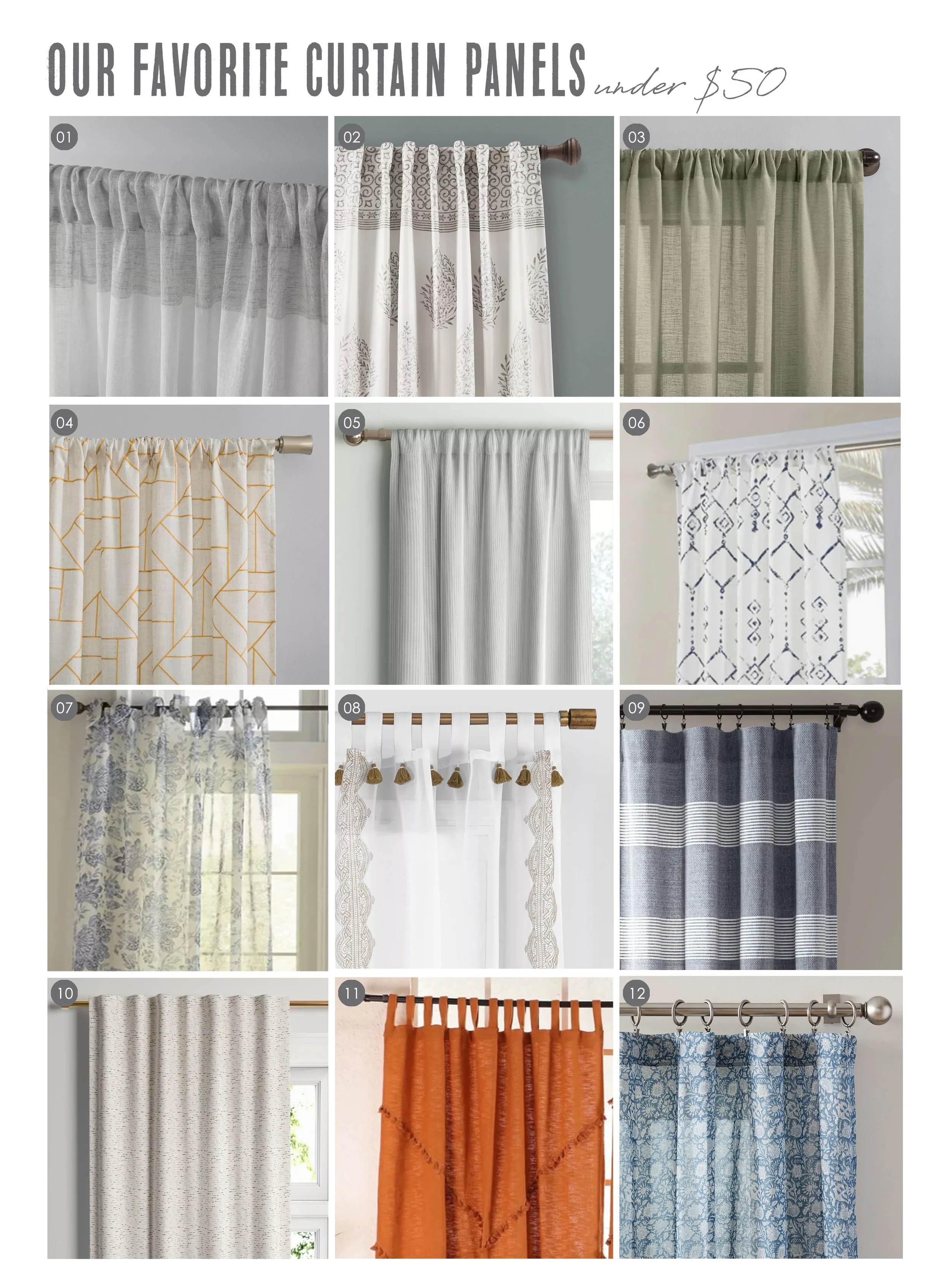Interior Design Secrets: Curtain Do’s + Don’ts
There is a lot to think about when it comes to selecting window treatments for your interior design project. Although the color and pattern of your curtains are certainly important and play a huge role in the feel of your space, the size and placement of the curtain panels are equally important. Below I’ve outlined some of the biggest mistakes we see homeowners making with their curtains and ideas to easily fix those mistakes.
Too Short Curtain Panels
Curtains look and function best when they are floor length. Although some pants look great cropped at the ankle, the same does not hold true for your window treatments. If you’re using ready-made curtain panels and they don't have the exact length that you need, purchase longer panels and have them hemmed to the correct height. You don't need a workroom to hem them, your local tailor can do the job. There are three floor-length options:
Floating - a finger width of space from the floor to the bottom of the panel
Breaking - a very slight fold or bend just above the hem
Puddling – the fabric pools on the floor
Floating is the easiest to maintain, breaking and puddling require some fluffing and arranging each time the curtain is moved. The only time you should go with short curtains is if there is something below the window that won’t allow floor-length, for instance, a heat source. Usually, when we have that situation with a client’s home, we recommend using a roman shade, which still brings color and pattern to the room but can fit within the frame of the window.
Too Narrow Curtain Panels
A curtain without enough fullness feels unfinished as if you were on a budget and could only afford half of the fabric you needed. When the curtains are closed, you want to make sure they still have some waves in them to give them an appearance of fullness. Measure the width of your window and multiply that by 2 or 2.5 to calculate the perfect width for panels with the appropriate fullness.
Too Narrow Curtain Rod
The curtain rod should completely cover the window frame and then extend past the window trim on both sides. Going wider than the window with the curtain rod makes the window appear wider. When the curtains are open, the panels can stack in front of the wall, rather than in front of the window, which allows more natural light into your room.
Curtain Rod Hung at the Wrong Height
Hanging the curtain rod just above the window visually shortens the height of the window and the room itself. The best practice is to hang the curtain rod in the middle of the distance from the top of the window casing to the ceiling.
Custom or Ready-Made Panels?
For most of our interior design projects, we specify custom window treatments. There are two main reasons we usually go the custom route with our clients, the first is the size of the window and the second is that our clients have hired us to create a custom home for them. With custom window treatments not only can we customize the sizes but we have an unlimited choice of fabrics and decorative trims as well as lots of options for pleat styles, this allows us to create something truly unique.
Custom Window Treatments?
Custom window treatments may not be the right fit for every project. Sometimes you need a value-driven solution or a solution with a quick turn around time for your window treatments. Although you have fewer fabric options with ready-made panels, there are still a lot of beautiful choices available and some have additional detailing like tassels or edge banding which give them a more custom feel. Here is a round-up of some of our favorite off the shelf curtain panels. If you can’t find a panel that is the exact height that you need, purchase panels that are longer and have them hemmed locally. Keep in mind, most of these listings are for single panels, not pairs, so make sure you are ordering enough panels for your project.
13. Bomu Curtain
15. Darby Curtain
17. West End Curtain
20. Forest Green Linen Curtain
22. Matte Velvet
23. Myla Floral
24. Rowena Curtain



